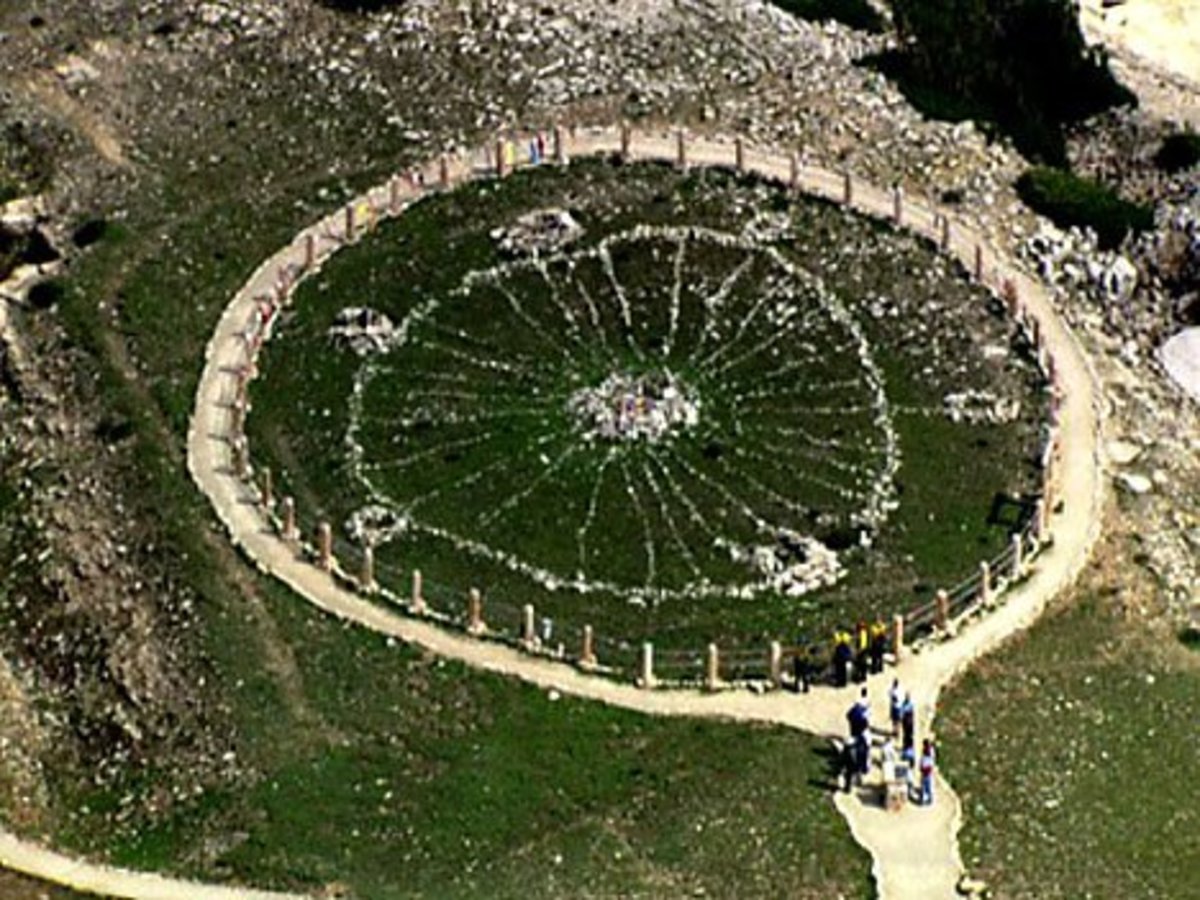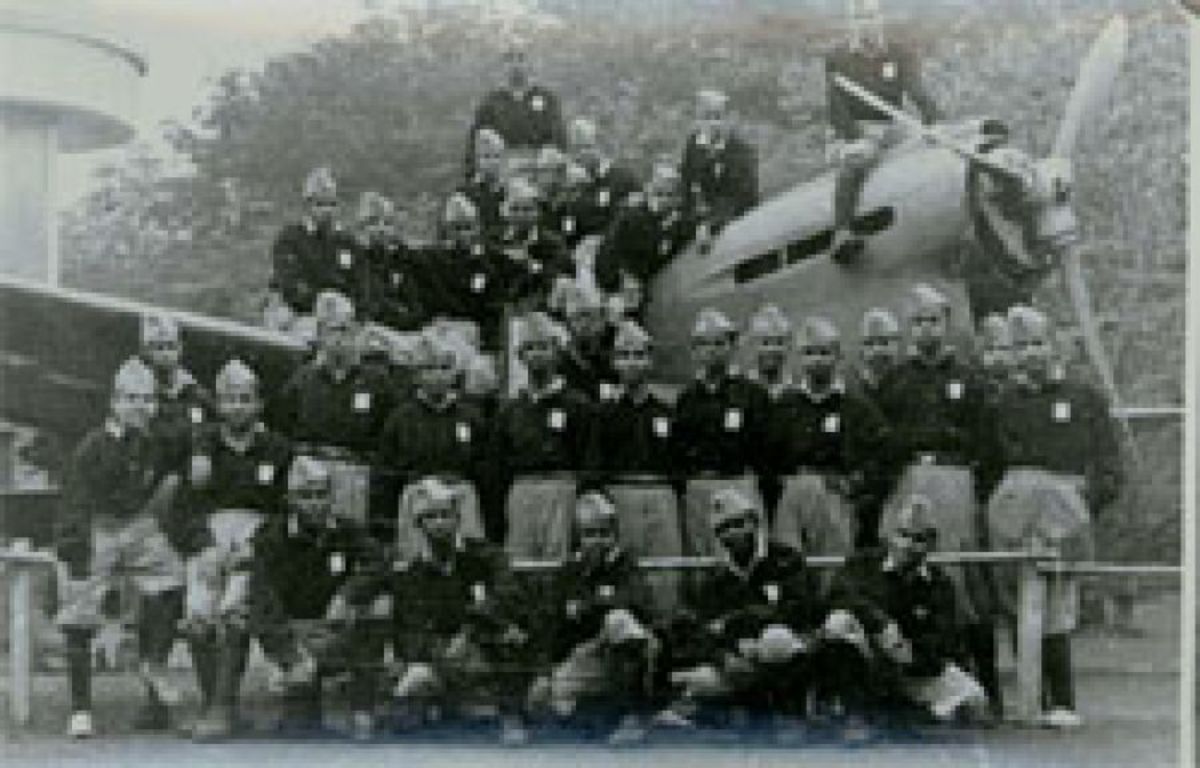West Point - Home of the Brave
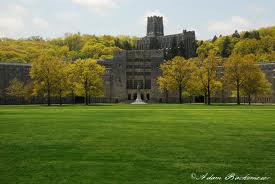
Two Hundred and Eleven Years of History
West Point, fifty miles north of New York City on the Hudson River, was America's first engineering school. It was created in 1794 to ensure a resource of trained military leaders. The fear was that a collection of experienced officers may not always be readily available when conflicts arose.
The term "cadet" was applied to the first students, some of whom were already officers in the regular army. It came from European custom referring to a younger son who attempted to replace the status of being the heir in the family with the status that came from military rank.
The first officer/students may have objected to being reduced to "pupils" and may have expressed their anger by burning down the original two-story instructional building in 1796, along with all the books and instruments of study. Congress created the Corps of Engineers as a branch of the military in 1802 with the stipulation it would be posted at West Point as a national military academy.
Cadet Gray, the traditional color of West Point uniforms, has a practical history going back to 1815: a wartime shortage of the dark blue dye for military uniforms.
In its first hundred and seventy-four years, all cadets graduated with a bachelor of science in engineering degree. Today cadets receive degrees in a variety of disciplines, but all have a foundation in the maths and sciences and prepare USMA graduates for military leadership.
Leadership. Lee, Grant, Patton, Eisenhower, MacArthur, Odierno, McChrystal. Duty. Honor. Country. These names and words are now (or will be) written on the buildings, engraved in brass, and bled into the hearts of the many who are called to apply to go to this college - and into the long grey line of the few who are chosen.
Trophy Point overlooks the Hudson River
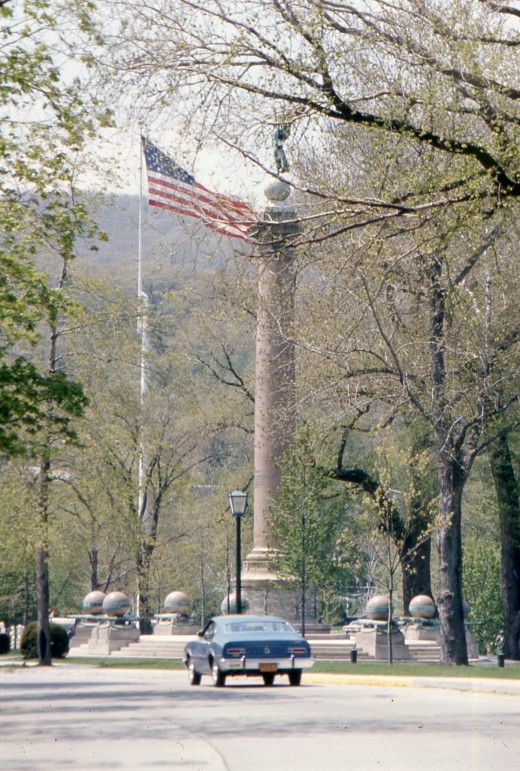
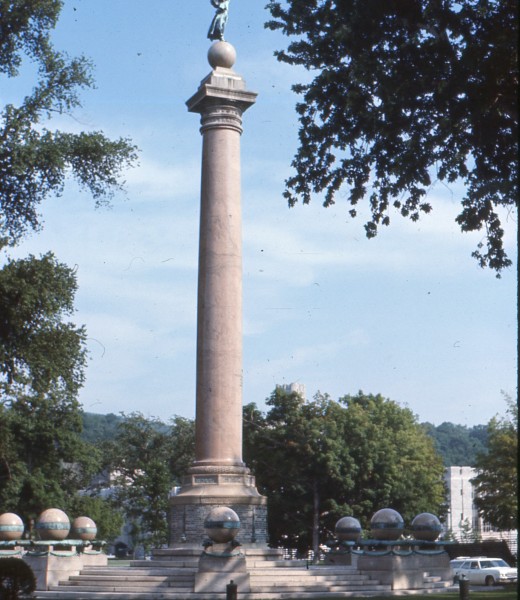
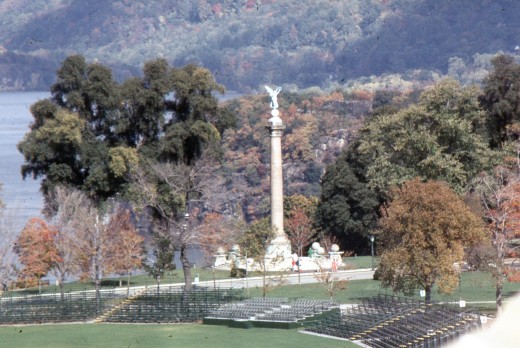
I was an A-Squader
My personal experience with West Point began in 1971 when I was the girl back home to a cadet in his first year at the academy - a plebe. Due to the strict restrictions on the time, attention, and physical being of a plebe, I didn't make the trip from Georgia to New York until fall of his sophomore year when he was lovingly referred to by the Corps as a cow. We met in New York City. We went to a football game at Rutgers, followed by my first ride up the Palisades Parkway, through the village of Highland Falls and its all girl college known as Ladycliff, and through the Thayer Gate onto the military reservation at West Point.
Ironically, Ladycliff closed it's doors after women joined the Long Gray Line in the mid-1970s. It is now a West Point visitor's center.
Pictures don't do the place justice today any more than they did in 1972. The ones I've included (except for the first one - mine was just too pixelated) were all taken by either me or my cadet during my visits. In addition to the ones I display, there are many places on the reservation a picture can't describe. There is also one place a tourist is not allowed.
Flirty - Flirtation Walk was only accessible to a cadet who was accompanied by a young lady. It was a wooded path that meandered along the banks of the Hudson River. Near the end of the trail was the Kissing Rock. Legend held that if a young lady did not permit her cadet to kiss her under the rock, it would fall into the Hudson, taking the couple along with it. I don't believe the legend was ever empirically tested. The only other people who made the effort to traverse this trail were the intrepid tactical officers who were determined to catch the cadets in their charge in violation of the restriction against PDA's (public displays of affection). That is if crawling through the woods to a remote site can be defined as catching a cadet in public.
50 miles north of New York City
ARMY Football is a big part of USMA tradition
It is easy to forget the impressive history of West Point's football program. I wonder how successful the teams at Alabama and Ohio State would be if when they recruited a potential player they had to include the fact that at the end of the young man's college career he could look forward to being sent off to war. Not possibly, but for the last thirteen years, certainly.
The Black Knights have three national championships, three Heisman Trophy winners, and 26 Hall of Fame members on their all-time roster. Granted, their heyday was back in the 1930s and 1940s, but that record is still impressive by anyone's standard.
One title West Point still holds is "the most beautiful football stadium in America." It is certainly not the largest capacity stadium like a Penn State (107,282) or a University of Texas (100,119), but set on the side of Lusk Reservoir and surrounded by an old growth forest, it is a picturesque setting that makes in impression on any visiting team Army comes up against.
BEAT NAVY!
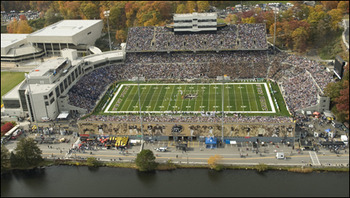

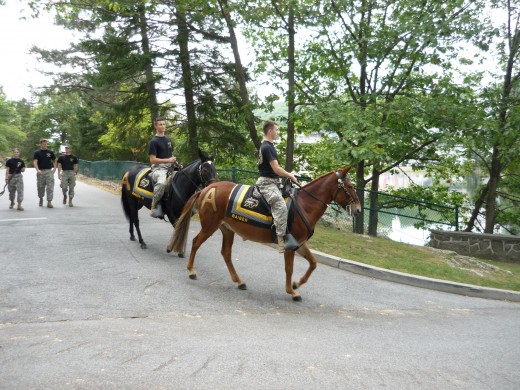
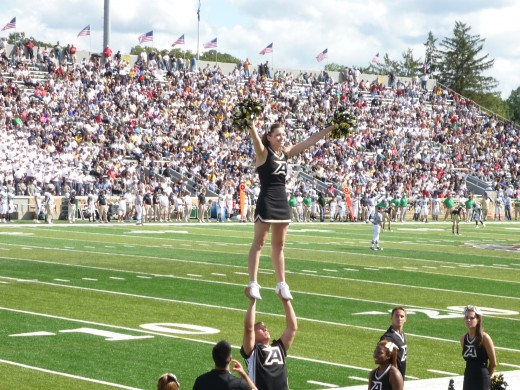
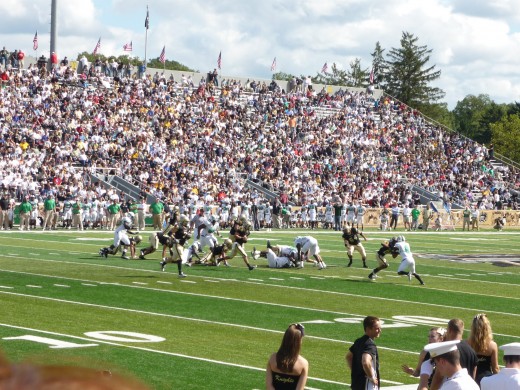
West Point is a Must-See
Have you ever visited the United States Military Academy? (Please include your impressions in the comments.)
Forty Years Later
My cadet and I dated long distance, long before the benefit of free long distance via cell phones, and the instant gratification of email and SKYPE. I still have a shoebox full of letters and cards from our courtship. We got pinned. We got engaged. We got married. We spent 20 years as an Army family, living in two foreign countries for a total of seven years and in the state of Washington for four years (a state as far from our home state, Georgia, as geographically possible.) I became what is known as a two percent-er: the percent of women who dated her cadet while he was at West Point, married their cadets after graduation, (when we were legally allowed to do so) and were still married to them at the 20-year retirement mark from active duty.
In all that time, West Point has seen many changes, some more significant than others. My husband still has the slide rule he used for the many math and engineering courses he took as a cadet. Now we talk about having that relic bronzed. Today cadets receive emails from their professors notifying them of any changes to their homework assignments. All the technological advances of the past twenty years have made the cadet experience something very different than it was for "the Old Corps," a term every class seems to claim includes them.
The class after the class my cadet was a member of included the first women at West Point. At the time I thought the admission of women to The Corps was an absolute waste of the country's resources. Going to USMA was all about turning out combat officers, and women were and to this day are excluded from those branches. I was wrong.
While graduates now enter all branches of the Army, not just combat arms, the officers West Point produces are by and large much more well-rounded, less socially inept young people than the "old grads" from the all-male years. The officers' ladies from the pre-1977 classes lovingly referred to "The Cadet Syndrome" to describe the condition that limited their husbands' ability to interact with the fairer sex after the four formative years at the male-only academy.
In spite of recent reports of sexual misconduct among some cadets, which is particularly heart-breaking to grads considering cadets and midshipmen are supposed to be "the cream of the crop", the presence of women at the academies has resulted in officers who have successfully worked with members of the opposite sex as equals and superiors. Their higher education has included building experiences with females that are made up of more than opening the center-fold of a men's magazine.
And in today's military that has endured more than a decade of constant war, we've seen two theaters in which the "front lines" of the war zone have not been clearly defined. Many women have been among our casualties and fatalities while doing their "non-combat" jobs. There is no longer any justification for not giving both sexes the same opportunity for the most advanced military leadership training our country has to offer.
In the main library at West Point there is a display made up of one class ring from each class to graduate from the academy. It is a lovely collection of the styles of rings over the years. But more moving than the beauty of the jewelry is the fact that most of the rings were donated posthumously, by the families who had lost a son or daughter, a husband or a wife, a father or a mother, in war.
The ring from the class of 2003 belonged to First Lieutenant Laura Walker, the first female graduate killed in action. She died in Afghanistan in 2005 by a roadside bomb. Her two brothers and her father are also members of the Long Gray Line.
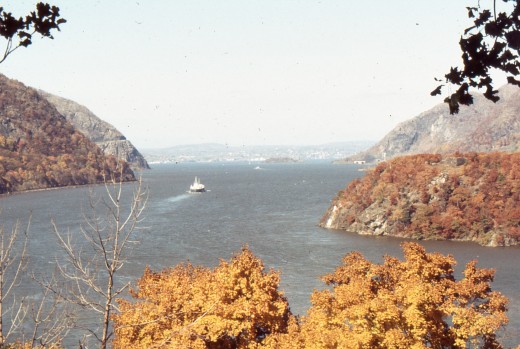
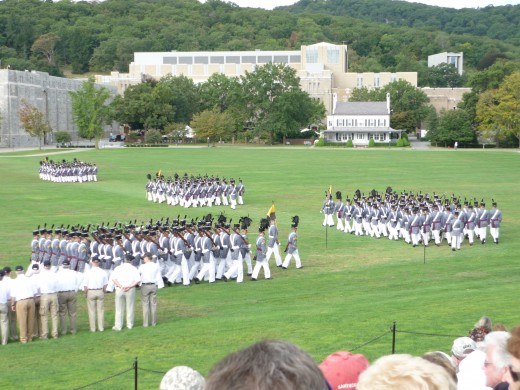

Pass in Review
West Point no longer does full Corps parades on a regular basis. Parades of today usually only include two of the four regiments that make up the entire number of cadets. From 1971 to 1975, the West Point of my experience, the last companies in the last regiment spent a total of three and a half hours more than the first companies in total time on The Plain during their four years as cadets. The first cadets on the field could watch the last of the parade from their rooms if they lived in Washington Hall, which faced The Plain.
In preparation of experiencing my first game day parade, my cadet assured me that I would absolutely be able to pick him out of the crowd of 4,000 cadets I was about to see en-mass upon the parade field. "I'll be the one in the white gloves," he said. Can you believe I married him four years later anyway? (Reference the previously mentioned "Cadet Syndrome.")
West Point has experienced many changes in the last forty years. Old grads have been talking about the days of "the old corps" for as long as I can remember. They cite examples of how much harder the cadet experience was in their day and how much easier cadets of the current day have it. This tradition will no doubt continue as long as the long gray line marches on the plain along the banks of the Hudson River.



